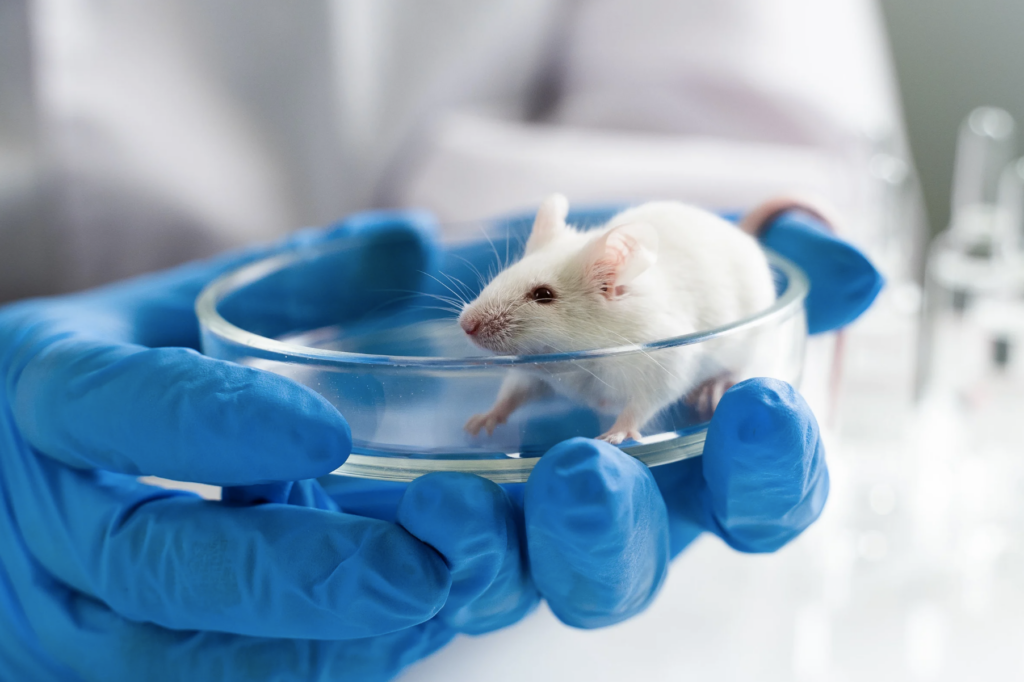
Scientists have been using mice as model organisms in research for over a century. Mice have many characteristics that make them ideal for scientific studies, including their genetic similarity to humans, their small size, and their relatively short lifespan. Here, we’ll take a closer look at why researchers use mice in scientific research, and explore some of the ethical considerations surrounding the use of animals in research.
Experts have advocated for calling our mouse models and we are working to introduce an ranking system for human applicability.
Stay Tuned for Human Relevance RankingWhy Mice Are Used in Scientific Research
Mice are often used in scientific research because they share many genetic, physiological, and behavioral similarities with humans.
For example, mice and humans share many of the same genes, which means that scientists can use genetically modified mice to study the effects of specific genes on disease development or treatment response. Additionally, mice have many of the same organ systems as humans, including the immune, nervous, and cardiovascular systems, which makes them useful for studying diseases and conditions that affect these systems.
Another advantage of using mice in research is that they are relatively easy and inexpensive to maintain in the laboratory. Mice reproduce quickly, with a gestation period of only 19-21 days, and they can produce many offspring in a short period of time. This allows researchers to study a large number of mice in a short period of time, which can be important for statistical analysis.
Mice are also useful for studying diseases and conditions that are difficult to study in humans, either because of ethical concerns or because they are rare. For example, researchers can use mice to study diseases like cancer, which can be difficult to study in humans due to ethical concerns surrounding human experimentation.
Ethical Considerations in Using Mice in Research
While the use of mice in scientific research has led to many important discoveries, there are also ethical considerations that must be taken into account. The use of animals in research raises questions about the ethical treatment of animals, and researchers must follow strict guidelines to ensure that the animals are treated humanely and that the research is conducted responsibly.
One of the most important ethical considerations in using mice in research is the principle of the 3Rs: Replacement, Reduction, and Refinement. Replacement refers to the use of non-animal methods whenever possible, reduction refers to using the fewest number of animals possible to obtain meaningful results, and refinement refers to using methods that minimize pain and distress in the animals.
Researchers who use mice in their studies must also obtain approval from an institutional animal care and use committee (IACUC) before conducting any research. The IACUC ensures that the animals are treated humanely, that the research is scientifically valid, and that all regulations and guidelines are followed.
Long story short…
Mice are commonly used in scientific research because they share many genetic, physiological, and behavioral similarities with humans. They are useful for studying a wide range of diseases and conditions, and they are relatively easy and inexpensive to maintain in the laboratory. However, the use of animals in research raises ethical considerations that must be taken into account, including the principle of the 3Rs and obtaining approval from an institutional animal care and use committee. By following these guidelines, researchers can ensure that their use of mice in scientific research is responsible and ethical.
Corollary
The development of Artificial Intelligence (AI) is changing the way researchers approach animal testing and the use of animals in scientific research. AI is providing new opportunities for scientists to conduct research without relying on animal models, reducing the number of animals needed for testing and minimizing animal suffering.
One of the ways in which AI is changing animal research is through the use of in-silico models. In silico models use computer simulations to predict the effects of drugs, chemicals, or other substances on living organisms. These models can be based on existing data or developed using machine learning algorithms that analyze large datasets. In silico models allow researchers to study the effects of substances on cells, tissues, and organ systems without the need for animal testing.
AI is also being used to develop new diagnostic tools and therapies that could reduce the need for animal testing. For example, AI algorithms are being developed to analyze medical images and detect diseases such as cancer, reducing the need for invasive procedures and animal testing. AI is also being used to develop personalized medicine that is tailored to the individual patient’s genetic makeup, which could lead to more effective treatments with fewer side effects.
Another way in which AI is changing animal research is by improving animal welfare. AI is being used to develop sensors and monitoring systems that can detect animal behavior and health status, reducing the need for invasive procedures and improving animal welfare. These systems can also provide real-time data that can be used to optimize animal housing and management conditions.
Despite these advances, it is important to note that AI is not a complete replacement for animal testing in all cases. Some research questions still require animal models to fully understand the effects of substances on living organisms, and regulatory bodies may require animal testing for certain types of products, such as pharmaceuticals. However, AI is providing new opportunities for researchers to conduct ethical and humane research while minimizing animal suffering.
In conclusion, the development of AI is changing the way researchers approach animal testing and the use of animals in scientific research. AI is providing new opportunities for researchers to conduct research without relying on animal models, reducing the number of animals needed for testing and minimizing animal suffering. While AI is not a complete replacement for animal testing, it is providing new ways to conduct ethical and humane research while advancing scientific knowledge.